“Lead Free” FAO Schwarz Ceramic Tea Party Traditional English Set tests positive for Lead & Cadmium (article with details).
Lead-free claims on the box
“Lead free”claims on their website
(“Lead free” is mentioned THREE times!).
Safety warning that came in the package
October 16, 2022 – Sunday
XRF test results for the pink polka dot FAO Schwarz tea set pictured are below
Well. I had truly hoped that this adorable little tea set would be one of the rare exceptions — in which a product made for children and explicitly advertised as “Lead-free” would turn out to ACTUALLY be Lead-free…but (as with most mass-manufactured ceramic items), my perpetual hope would remain un-realized yet again.
Outside of the fact that this FAO Schwarz tea party set tested positive for both Lead and Cadmium, this is truly a lovely little tea set! It is nice to hold and use, and is made of real china / porcelain, and sized perfectly for young children’s hands. And, unlike the many plastic sets out there, can actually be used with hot tea! To be clear: in a case like this, the issue is not whether or not it might cause harm to a child (at these levels, that is very unlikely), the issue in this case is isolated to the fact that the company is guilty of greenwashing, by – whether lazily or ignorantly – claiming the product is “Lead free“, when it is – by definition – indisputably not Lead-free.
How can a company say a product is Lead-free, when it is not?
When tested using XRF technology, this product was found to be positive for both Lead and Cadmium; in at least one component, the Lead level was above what might be considered safe by the Consumer Product Safety Improvement Act of 2008 (CPSIA), as the high reading we found was 216 +/- 21 ppm Lead (which means the Lead content is in the range of 195 to 237 ppm).
The hazard level for Lead (the level at / above which an item intended for use by children is considered unsafe and illegal by the CPSIA) for the paint, glaze or coating of a newly-manufactured item intended for use by children is 90 ppm or higher — so one could easily argue that this is a CPSC violation, given the presence of Lead at the specific levels we found…
However, given the CPSC has yet to issue formal recalls for baby bottles with XRF-detectable Lead levels in the range of 10,000 to 20,000 ppm [link], it seems that it is extremely unlikely that they would issue a recall (or demand that the company issue a recall) for this product — with a two-orders-of-magnitude lower level of Lead content.
When a company (falsely / incorrectly) claims a ceramic item like this is “Lead-free”, that is normally because they submitted the product for leach-testing, and it passed the test — i.e. the test results confirmed that any detectable Lead leaching out of the product tested (under specific testing protocols), was below the regulatory threshold at the time of manufacture.
The trouble here is that most companies don’t understand that meeting or exceeding standards related to the leach-testing methodology for Lead does not mean that a product is “Lead-free” — it just means that the product has been determined to be non-leaching for Lead at the time of manufacture.
So, on the basis of passing a leach test, a product could truthfully be advertised as being “Lead-safe“… But, because “Lead-free” is a simple, easily-confirmed-or-refuted claim regarding the factual Lead content of the item (i.e. “THIS PRODUCT DOES NOT CONTAIN LEAD” vs. merely this product was found to not leach more than a permissible amount of Lead at the time of its manufacture), it cannot factually be claimed to be “Lead-free”, if it has Lead content (regardless of whether or not it passed a leach test).
It is rare, however, that this “mixup”/misunderstanding applies to children’s items (and especially toys). Normally, companies producing children’s items that are advertised as Lead-free are actually producing Lead-free items (because of the strict nature of contemporary regulations governing the manufacturing and marketing of children’s items).
Note: this product is likely “safe”, even though it tests positive for Lead.
- Because this product was likely determined to be non-leaching for Lead (when new, at the time of manufacture) it is reasonable to assume it is likely safe (at least when new) for use by a child.
- Separately, because a tea set like this (a toy) is not likely to have the same level of wear and usage as a real / grownup tea set (which would be subjected to daily / frequent use with hot and acidic beverages – typically for years or decades) it is not likely that in the lifetime of this product it will begin to wear or deteriorate – and so it is also unlikely that the product will likely leach Lead in the future (again – this is not the case for “grownup” tea sets – you can read more about that concern here.)
In conclusion:
- On the basis of purely ethical and political considerations, I would not choose to let a child in my family use this product (even though it is very tempting to hold on to something like this for a potential future grandchild!)
- FAO Schwarz should change their marketing and packaging to note that the product is “Lead-safe” (and not Lead-free, as stated.) Alternately, they could state that it has been tested and found to be non-leaching for Lead.
- If you choose to use this with your children, it will not likely cause any harm, from a heavy metals perspective…
- But with the presence of two known metallic toxicants (which includes one known carcinogen – Cadmium) that is not a risk – however small – I would willing take with my family (especially as a mother of acutely Lead-poisoned children).
- If you specifically purchased this product because it was sold and marketed as “Lead-free”, you may want to contact the company and request a refund, citing this article.
- I will be sharing this information with the CPSC to see if they may decide to initiate a product recall given the fact that at least one component (the lid of the teapot) did test positive for Lead at levels that exceed the CPSIA regulatory limits for glaze.
Reading #1) With a focus on the knob of pink lid of the teapot (no white dots, pink glazed area only)
60-second reading
Readings repeated multiple times to confirm the results
- Lead (Pb): 156 +/- 19 ppm
- Cadmium (Cd): 38 +/- 7 ppm
- Tin (Sn): 705 +/- 28 ppm
- Mercury (Hg): non-detect
- Selenium (Se): non-detect
- Barium (Ba): 1,612 +/- 72 ppm
- Arsenic (As): non-detect
- Chromium (Cr): non-detect
- Antimony (Sb): non-detect
- Copper (Cu): 267 +/- 41 ppm
- Zinc (Zn): 523 +/- 41 ppm
- Zirconium (Zr): 11,300 +/- 300 ppm
- Niobium (Nb): 246 +/- 21 ppm
- Indium (In): 23 +/- 9 ppm
- Iron (Fe): 1,357 +/- 167 ppm
- Platinum (Pt): 140 +/- 41 ppm
- Bismuth (Bi): 87 +/- 15 ppm
- No other metals detected in consumer goods mode.
Reading #2) With a focus on the flat bottom of one of the saucers
60-second reading
Readings repeated multiple times to confirm the results
- Lead (Pb): 63 +/- 17 ppm
- Cadmium (Cd): 59 +/- 10 ppm
- Tin (Sn): 1,342 +/- 54 ppm
- Mercury (Hg): non-detect
- Selenium (Se): non-detect
- Barium (Ba): 479 +/- 56 ppm
- Arsenic (As): non-detect
- Chromium (Cr): non-detect
- Antimony (Sb): non-detect
- Copper (Cu): 406 +/- 52 ppm
- Zinc (Zn): 5,736 +/- 187 ppm
- Zirconium (Zr): 17,400 +/- 500 ppm
- Niobium (Nb): 363 +/- 25 ppm
- Indium (In): 19 +/- 11 ppm
- Iron (Fe): 1,312 +/- 178 ppm
- Platinum (Pt): 291 +/- 66 ppm
- Bismuth (Bi): 96 +/- 19 ppm
- No other metals detected in consumer goods mode.
Reading #3) With a focus on the pink polka dot side of one of the cups
60-second reading
Readings repeated multiple times to confirm the results
- Lead (Pb): 121 +/- 18 ppm
- Cadmium (Cd): 43 +/- 8 ppm
- Tin (Sn): 942 +/- 37 ppm
- Mercury (Hg): non-detect
- Selenium (Se): non-detect
- Barium (Ba): 727 +/- 54 ppm
- Arsenic (As): non-detect
- Chromium (Cr): 1,690 +/- 404 ppm
- Antimony (Sb): non-detect
- Copper (Cu): 281 +/- 42 ppm
- Zinc (Zn): 3,055 +/- 112 ppm
- Zirconium (Zr): 15,100 +/- 400 ppm
- Iron (Fe): 1,080 +/- 158 ppm
- Vanadium (V): 3,743 +/- 879 ppm
- Platinum (Pt): 168 +/- 48 ppm
- Bismuth (Bi): 38 +/- 14 ppm
- No other metals detected in consumer goods mode.
Reading #4) With a focus on the logo area on the bottom of the teapot
60-second reading
Readings repeated multiple times to confirm the results
- Lead (Pb): 87 +/- 24 ppm
- Cadmium (Cd): 89 +/- 15 ppm
- Tin (Sn): 2,667 +/- 132 ppm
- Mercury (Hg): non-detect
- Selenium (Se): non-detect
- Barium (Ba): 845 +/- 93 ppm
- Arsenic (As): non-detect
- Chromium (Cr): 3,200 +/- 576 ppm
- Antimony (Sb): non-detect
- Copper (Cu): 487 +/- 69 ppm
- Zinc (Zn): 7,645 +/- 275 ppm
- Zirconium (Zr): 35,200 +/- 1,200 ppm
- Niobium (Nb): 399 +/- 33 ppm
- Indium (In): 29 +/- 17 ppm
- Iron (Fe): 1,453 +/- 228 ppm
- Vanadium (V): 3,693 +/- 1,056 ppm
- Platinum (Pt): 326 +/- 85 ppm
- Bismuth (Bi): 62 +/- 23 ppm
- No other metals detected in consumer goods mode.
Reading #5) With a focus on the flat top part of the pink lid of the teapot
60-second reading
Readings repeated multiple times to confirm the results
- Lead (Pb): 216 +/- 21 ppm
- Cadmium (Cd): 47 +/- 8 ppm
- Tin (Sn): 966 +/- 36 ppm
- Mercury (Hg): non-detect
- Selenium (Se): non-detect
- Barium (Ba): 2,156 +/- 88 ppm
- Arsenic (As): non-detect
- Chromium (Cr): non-detect
- Antimony (Sb): non-detect
- Copper (Cu): 312 +/- 43 ppm
- Zinc (Zn): 364 +/- 33 ppm
- Zirconium (Zr): 14,600 +/- 400 ppm
- Indium (In): 17 +/- 9 ppm
- Iron (Fe): 1,083 +/- 54 ppm
- Platinum (Pt): 171 +/- 43 ppm
- Bismuth (Bi): 32 +/- 13 ppm
- No other metals detected in consumer goods mode.
To see more “Lead Free” items with Lead that I have tested, click here.
For those new to this website
Tamara Rubin is a Federal-award-winning independent advocate for consumer goods safety and a documentary filmmaker. She is also a mother of Lead-poisoned children. Tamara’s sons were acutely Lead-poisoned in August of 2005. She began testing consumer goods for toxicants in 2009 and was the parent-advocate responsible for finding Lead in the popular fidget spinner toys in 2017. Her work was also responsible for two CPSC product recalls in the summer of 2022, the Jumping Jumperoo recall (June 2022) and the Lead painted NUK baby bottle recall (July 2022) and was featured in an NPR story about Lead in consumer goods in August of 2022. Tamara uses XRF testing (a scientific method used by the U.S. Consumer Product Safety Commission) to test consumer goods for toxicants (specifically heavy metals), including Lead, Cadmium, Mercury, Antimony, and Arsenic. All test results reported on this website are science-based, accurate, and replicable. Items are tested multiple times, to confirm the test results for each component tested and reported on. Please click through to this link to learn more about the testing methodology used for the test results discussed and reported on this website.
One of the marketing images for this product:




Never Miss an Important Article Again!
Join our Email List


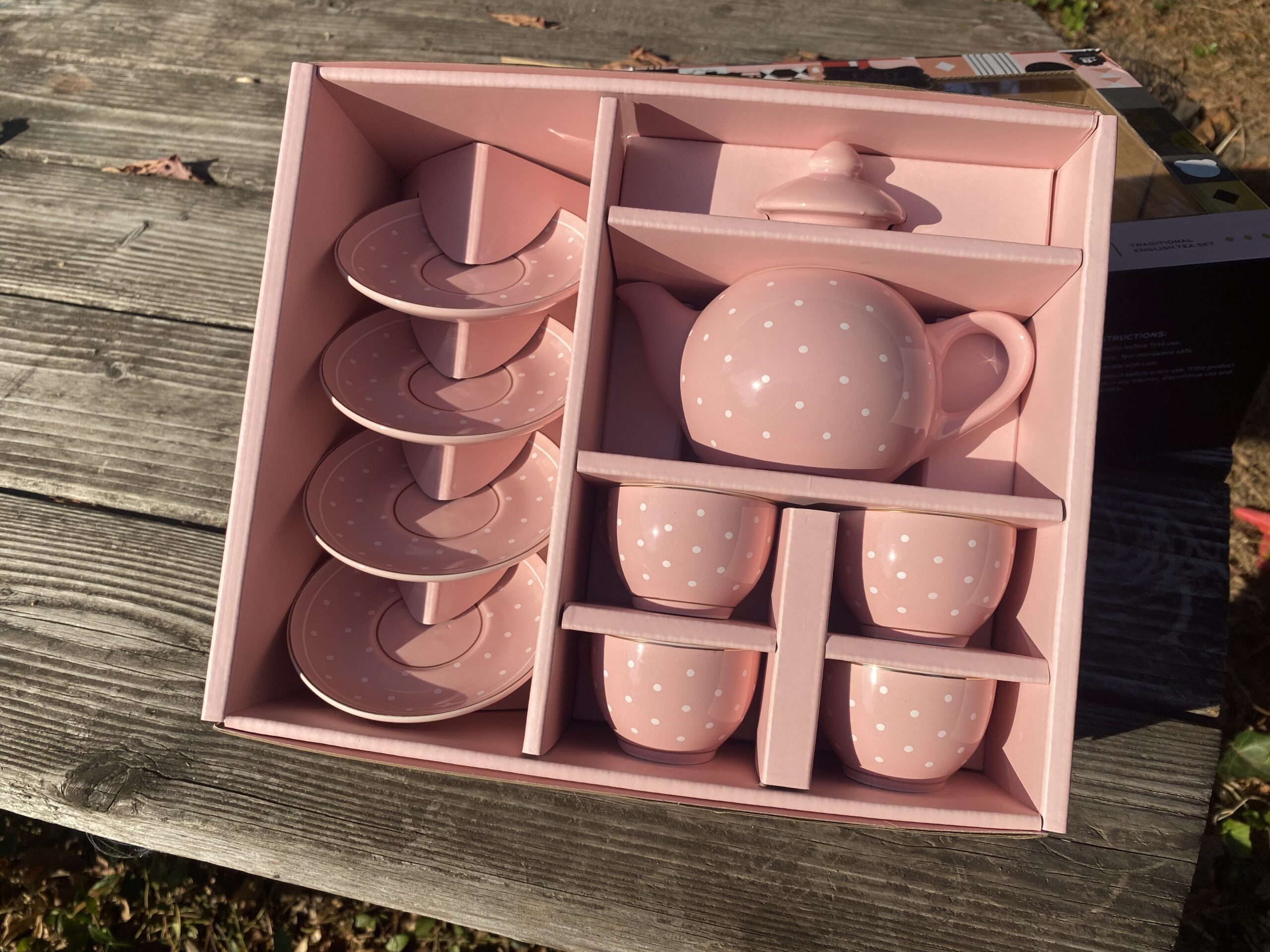
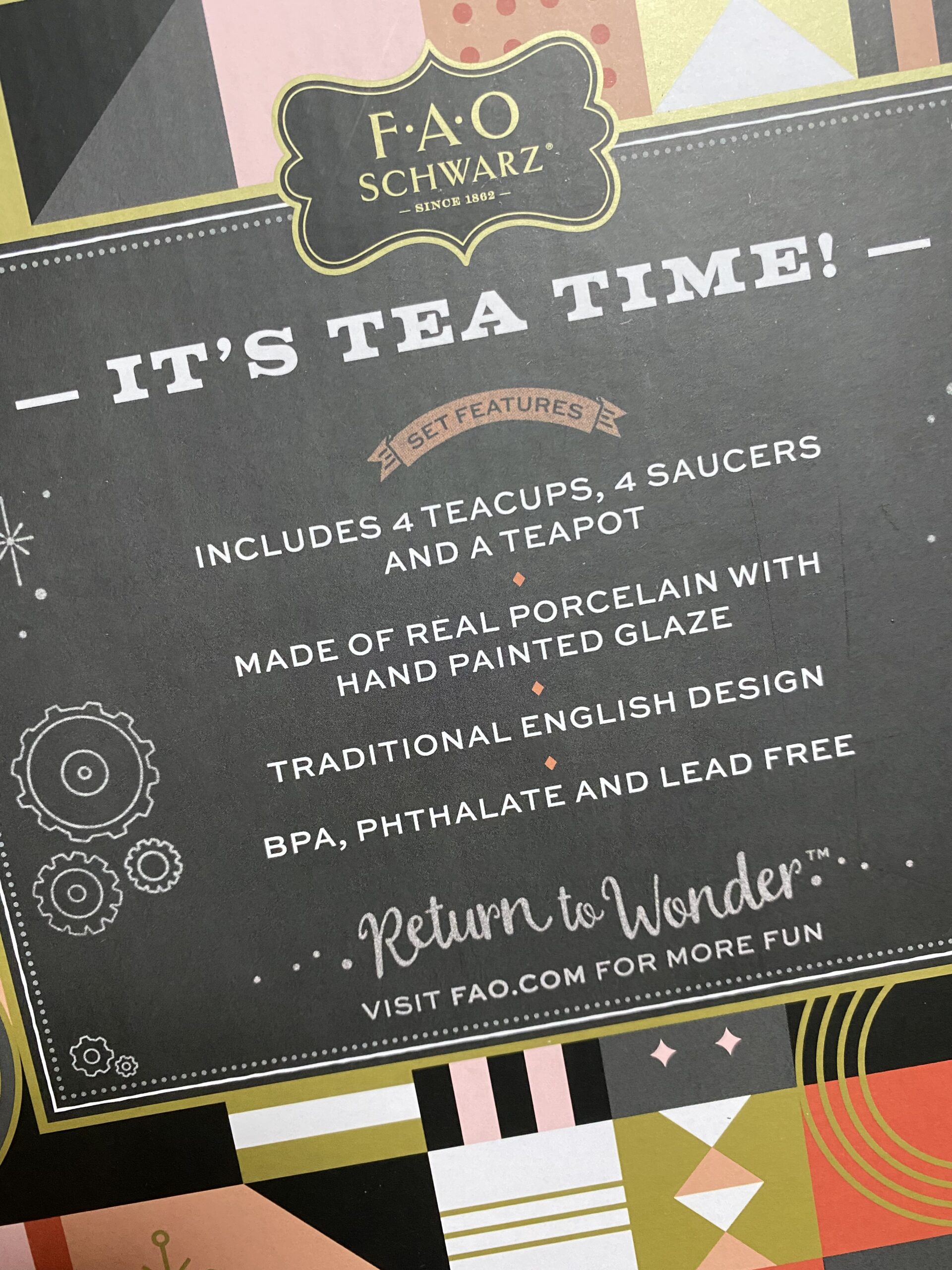
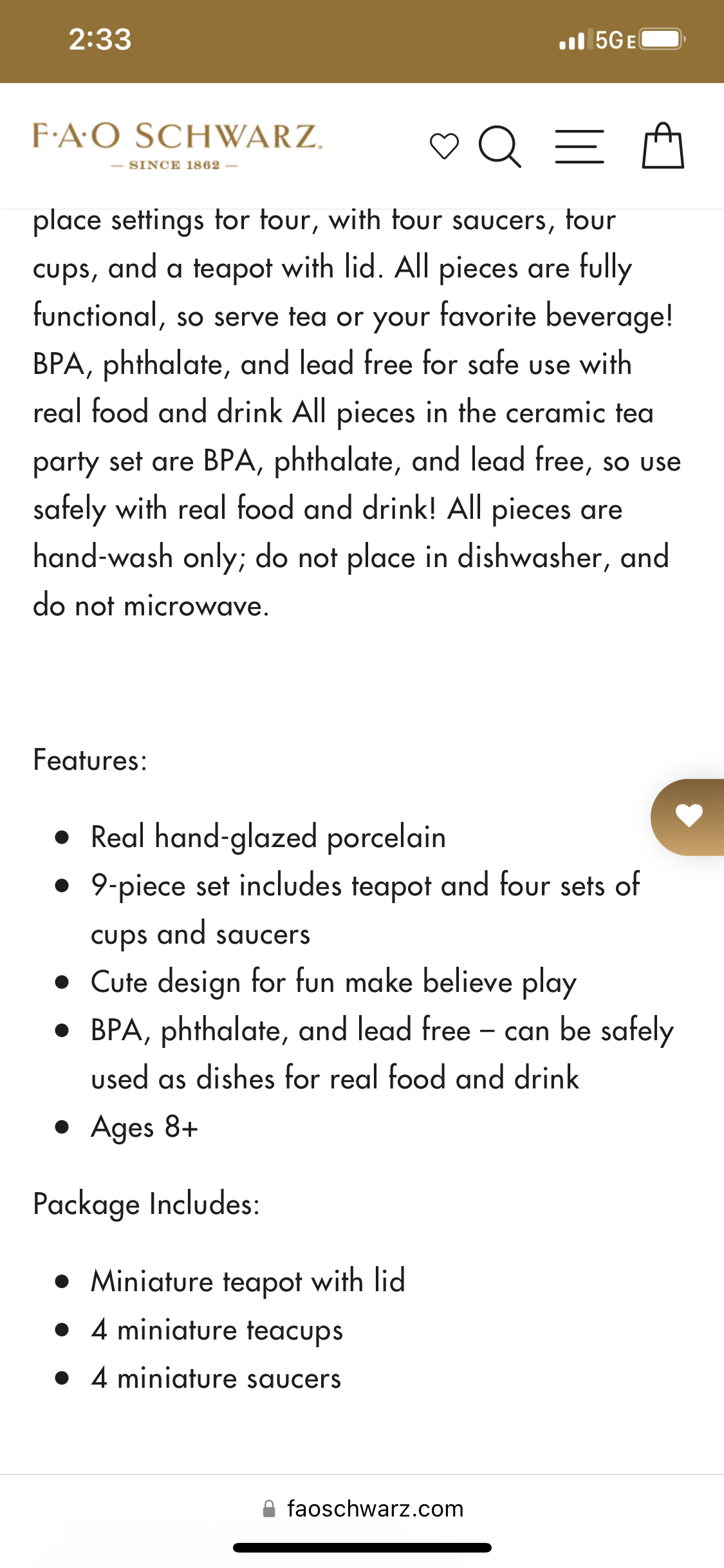
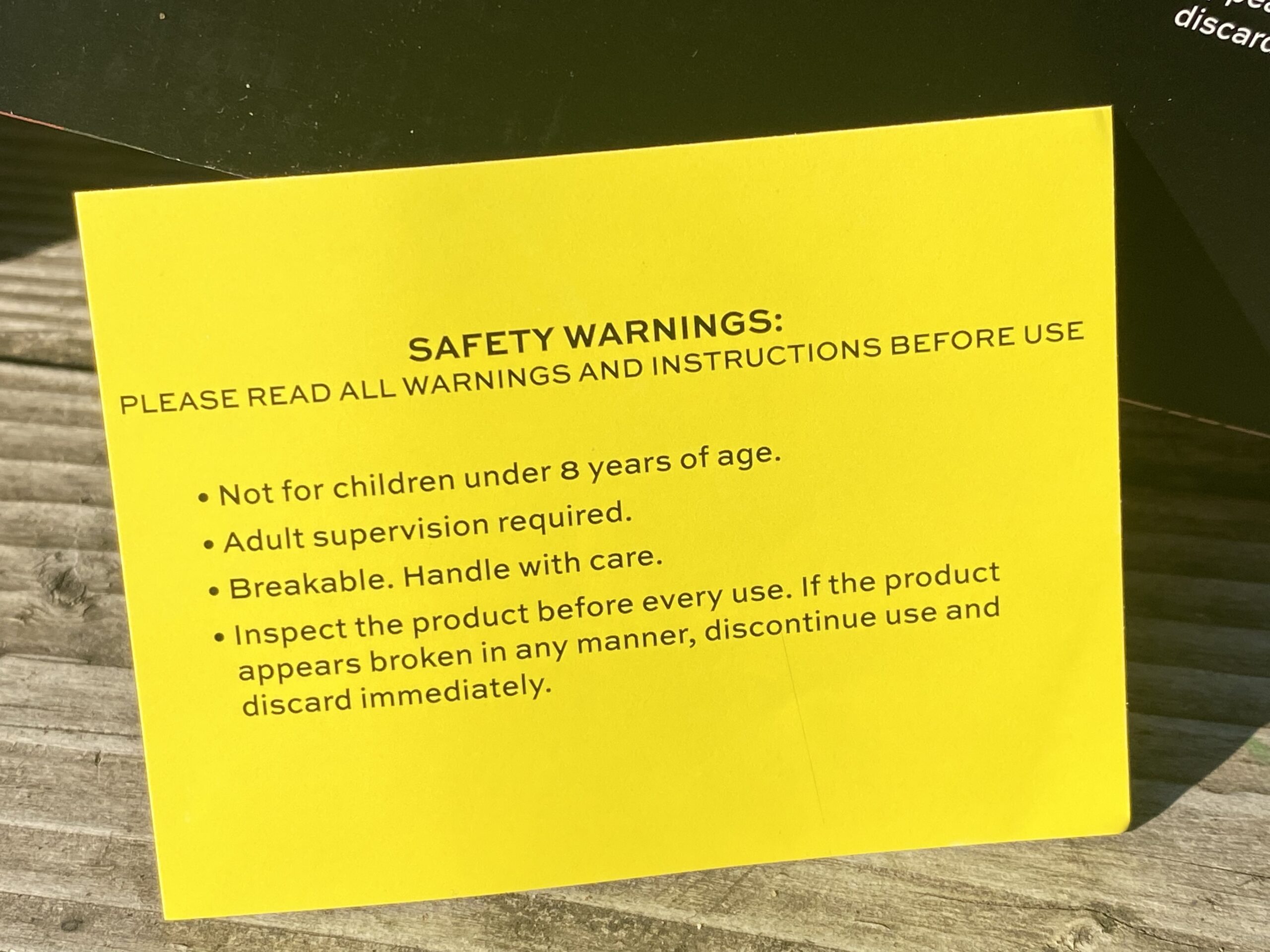
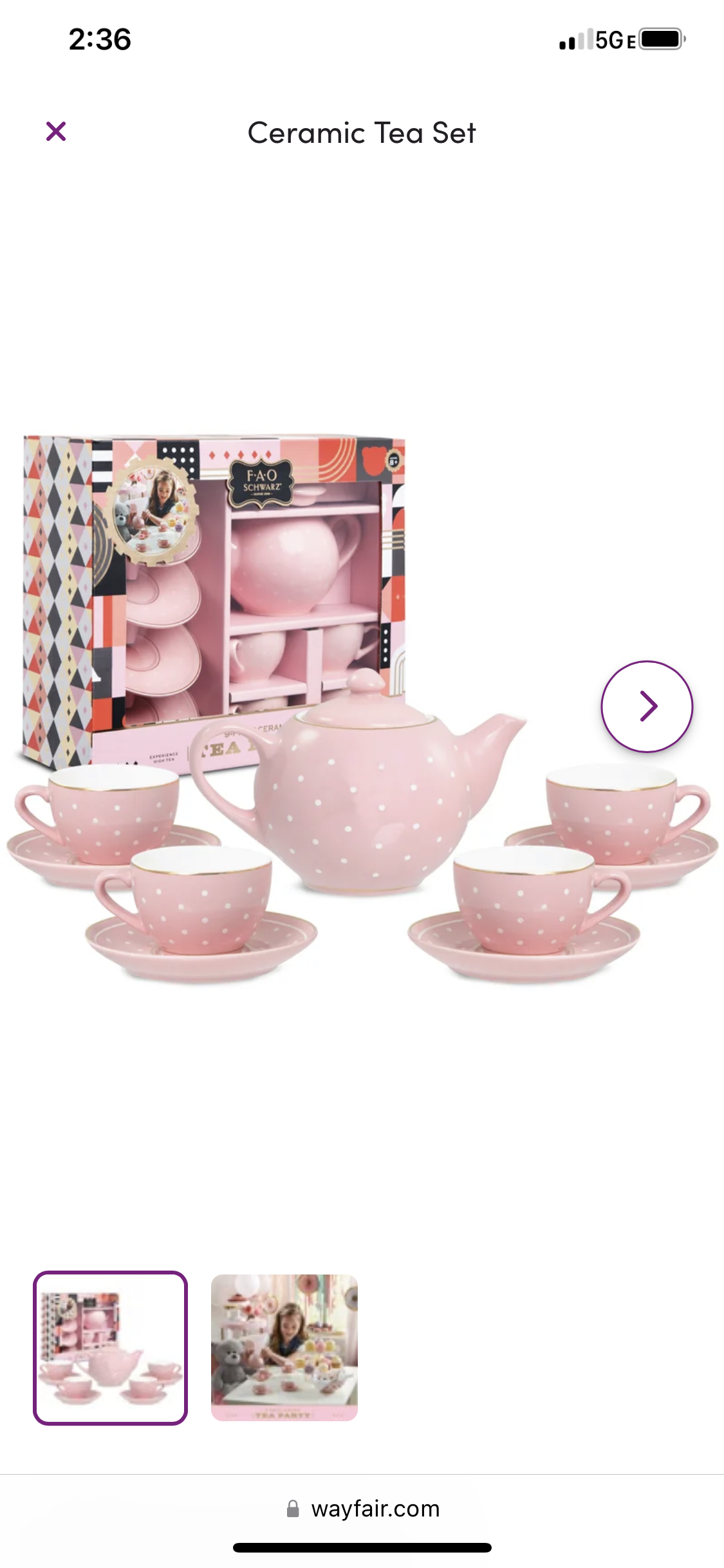
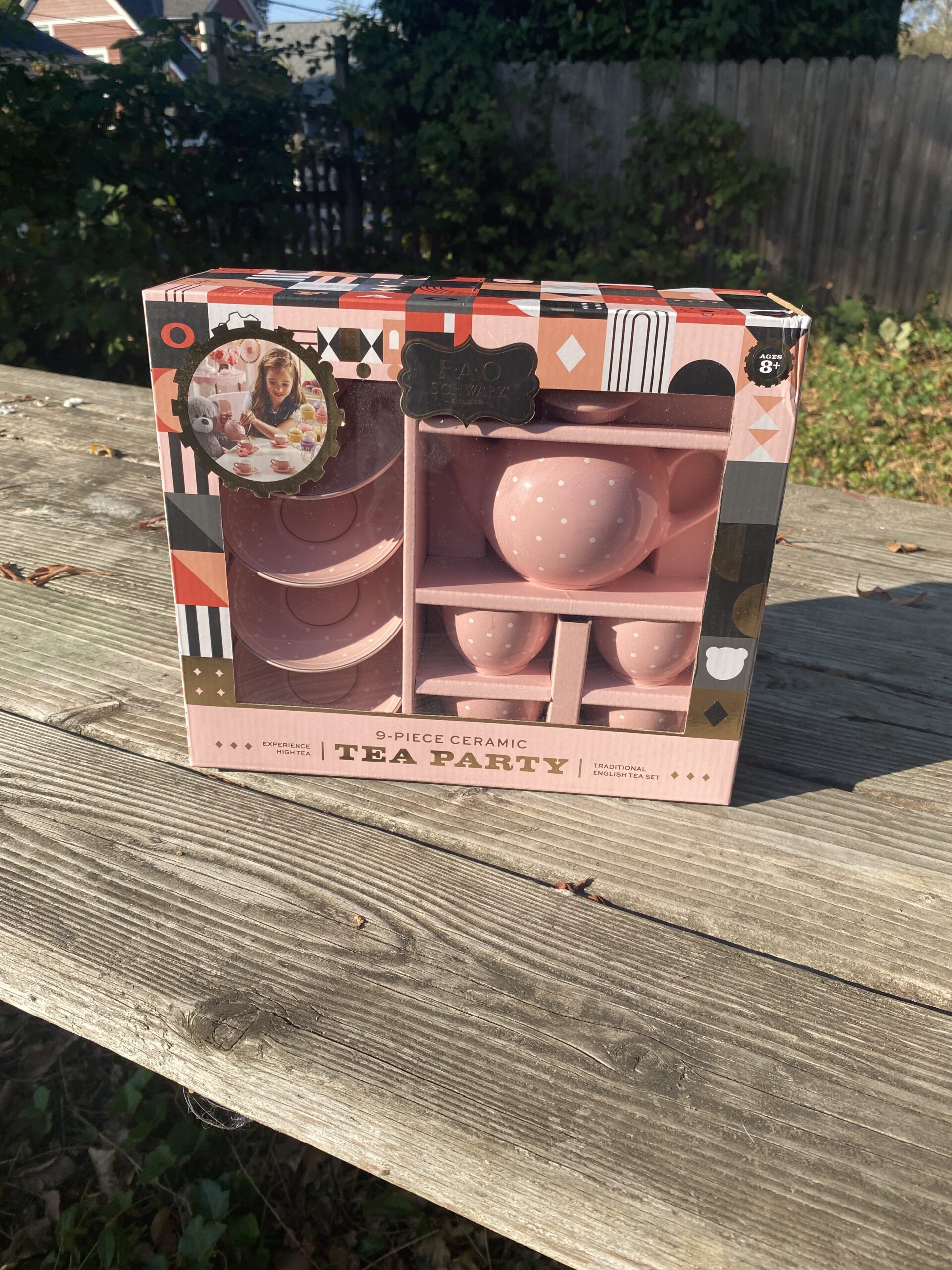
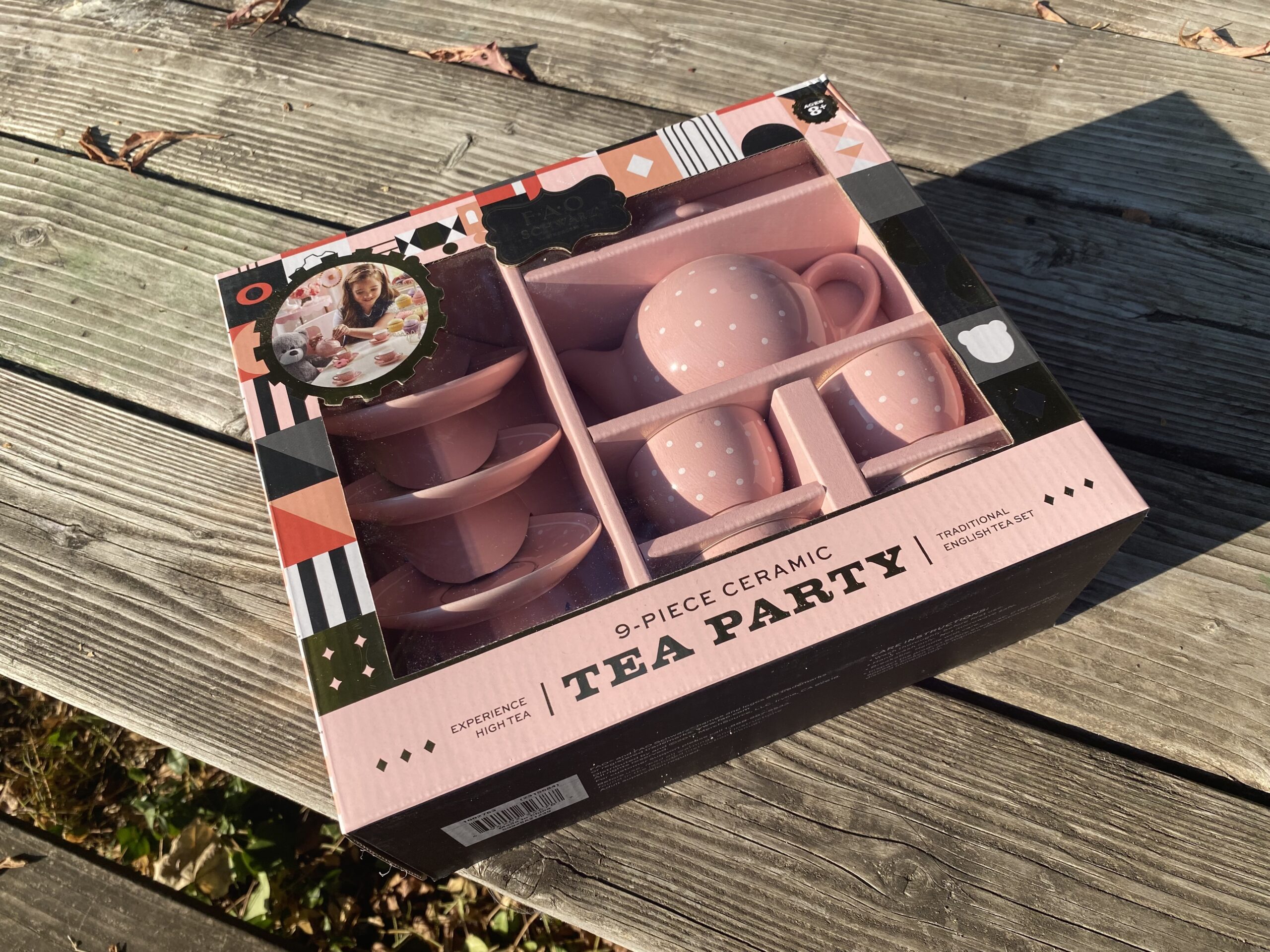
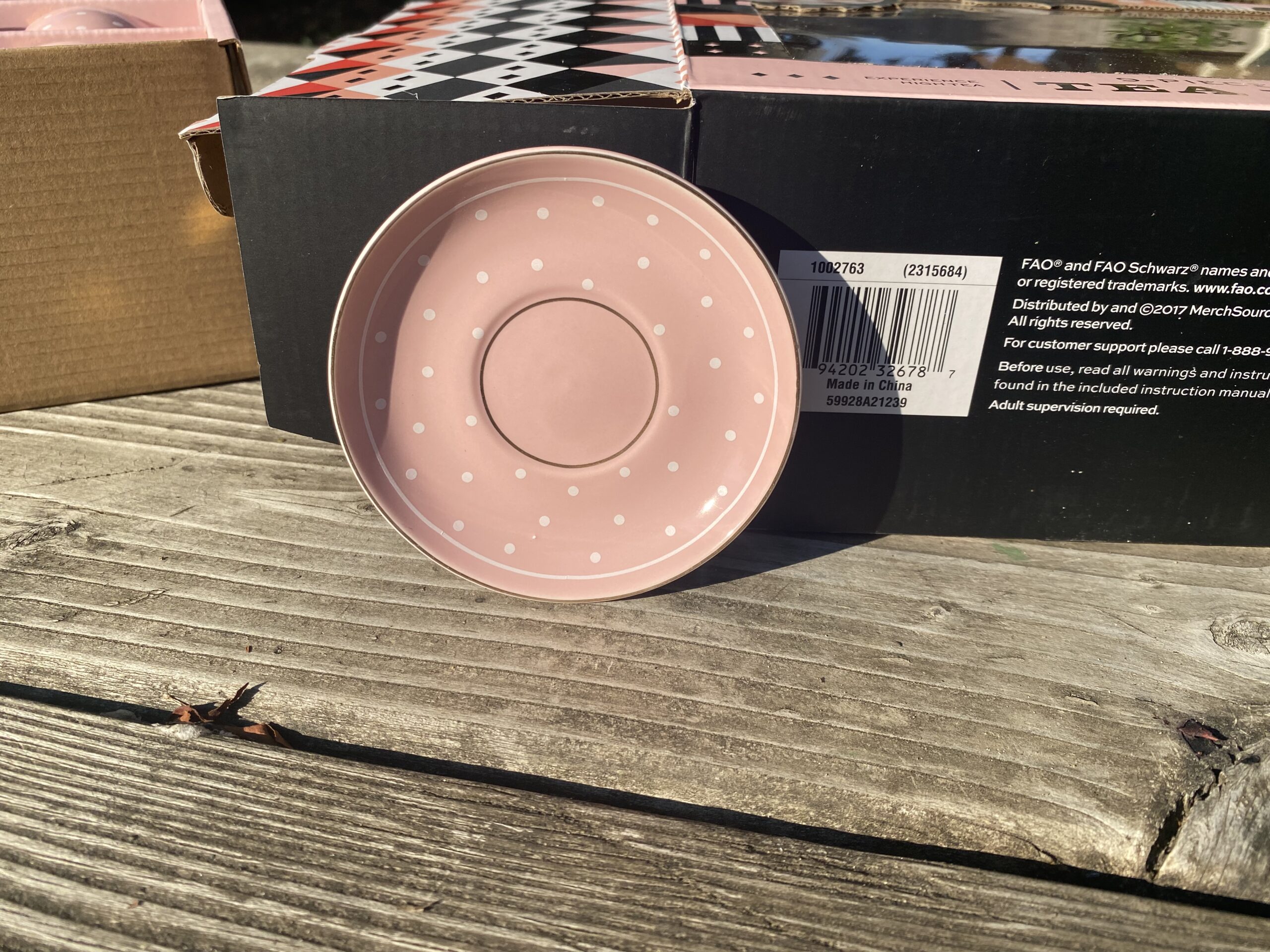
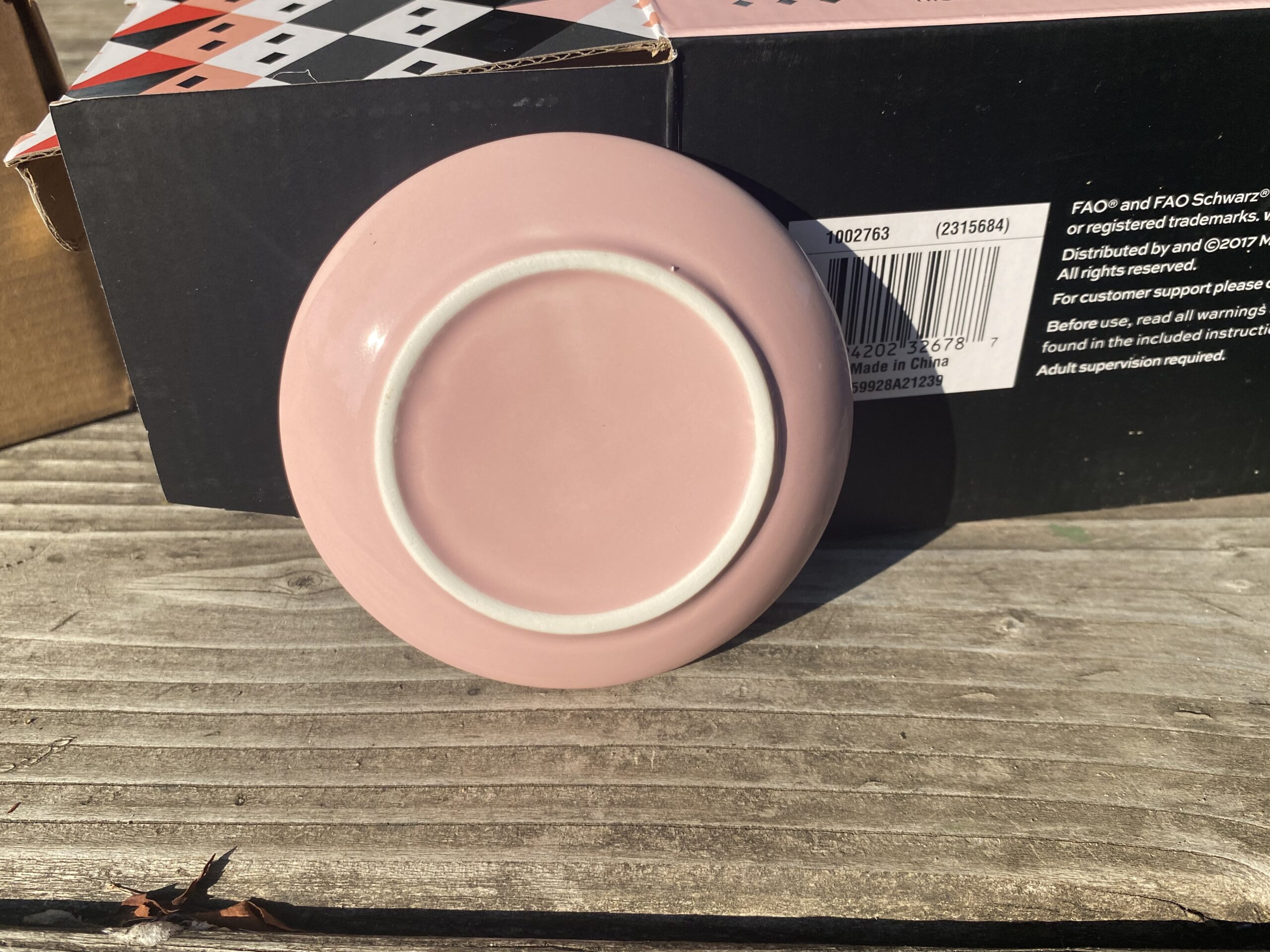

Tamara, could you please check the pastel version of this tea seat? A lot of FAO products are sold in Target in Australia for Christmas. Christmas stock has just come in again.
I bought two of these for my girls :s
While this is last year’s model, I’m fairly certain test results for this year’s model would be similar. Someone would have to buy it and send it in to me for testing. Look under the “participate” tab – in the header menu of the site to see how to send something in for testing.
Do you honestly believe your testing mechanisms, technique, and instruments you rent out are more advanced and accurate than the CPSC approved third-party lab with real scientists that Merch Source (the manufacturer) uses to obtain certification to pass this product as acceptable for US marketing to children? Never mind the children… if nothing else.. for their own preservation of reputation, avoidance of sanctions and penalties and massive lawsuits, don’t you think the manufacturer would rigorously follow federal law in regards to lead and children’s products? It’s the year 2024 and it’s Fao Shwarz for God’s sake. Mother to mother, I am so sorry for what happened to your children on your watch. But please. It is nothing to do with the tea set. Let it go.
I am sorry you are in a bad mood Summer.
I do not “rent out” instruments.
For the testing we do we use the same EXACT instrument and testing methodologies used by the CPSC.
I actually have trained health departments in using this technology to help families.
I have done trainings at EPA headquarters, Hospitals and Universities (for doctors and others to get CEUs) and also given talks at National Public Health Conferences (as a Keynote Speaker) and have been a guest presenter at Stanford University. This year Consumer Reports began calling Lead Safe Mama, LLC a partner organization in their public statements. Here’s one collaborative news story with Consumer Reports:
I’m not sure where you get your information, but you may want to do a little more research.
The work of Lead Safe Mama, LLC has been responsible (in collaboration with the FDA and CPSC) for six product recalls in recent years. You can read more about that here:
https://tamararubin.com/2023/08/find-out-about-product-recalls-months-before-they-happen/
t
Thank you for all you do! You have become a trusted resource for me as I decide what products to bring into my family’s home.
Are you aware of any tea sets like this that are actually lead and other heavy metal free? Trying to find!
Not yet.
Hi, I understand when you say it is leach free, but when testing the outside parts they are positive for lead, correct me if I’m wrong. How would a child get lead poisoning from this? By it leeching and then drinking from it after presumably years of use? Or it breaking and touching the broken part/storing less dust? I’m just curious, you can test the coating and it be positive but how if the leeching part isn’t testing positive? I’m genuinely curious and went to be able to explain to my mil who just bought this for my 2 yr old. (I know it says 8 on the box!) Thank you for all you hard work.
Hi J.
I think this is not likely a lead poisoning risk, given children are not likely to drink from it on a regular basis (so it is not likely to wear with use, as it is not likely to be used that often for drinking). It is more an ethical / false advertising consideration. Also – this is just out of bounds from a legal standpoint as well (compounding the ethical considerations).
Tamara